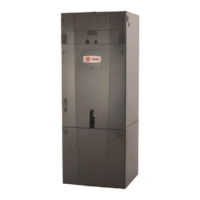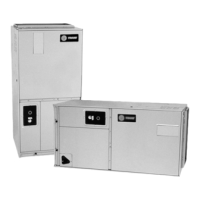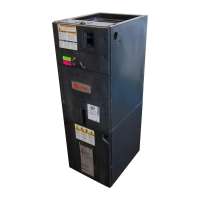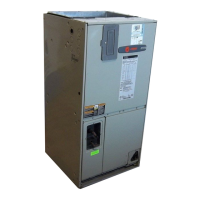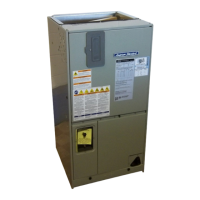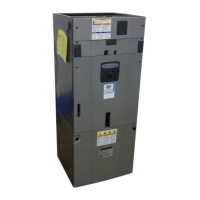140
BCX-SVX002A-EN
Notes:
• In many cases, indirect requests will result in
fan behavior change regardless of whether the
end-device fails to actuate (due to device
failure, or safety/down-stream lockouts). If there
is hot water available on CSTI units with
changeover coils and electric heat, we will still
drive the fan to the appropriate electric heat
speed.
• The new fan coil designs incorporate
sophisticated fan interlocks that will lockout
heat if there is a fan failure.
If the preceding conditions do not describe the behavior of
the unit, the following checks should be performed:
Table 62. Motor spins too fast or spins without any apparent speed request
Situation Probable Cause
Motor not controllable Verify that the voltage jumper on the motor plug harness is absent for 208-230V units and 277V units. If the
jumper is present for these units, the motor electronics will be damaged, and the motor will not be
controllable.
Fan speed request too low Verify that the fan speed request is not below 450 rpm. Speeds below 450 rpm are not supported on the fan
coil product.
Inputs not of consistent polarity Verify that the all binary inputs to the customer terminal blocks are of proper and consistent polarity.
• For CSTI units, the fan inputs and end device inputs on TB3 must receive signals that are 24 Vac with
respect to the unit chassis.
• For Fan Speed Switch (FSS) units, that incorporate the Tracer
®
CSTI adapter board, all inputs to TB3
must be 24 Vac with respect to unit chassis.
Note: Do not short 24 Vac (pos 1 or pos 2) to chassis; refer to the unit schematic.
Failure of motor control board Verify that variable speed (VSP) inputs are properly wired to 1TB4.
• Do not short the courtesy 10 VDC supply to chassis or loads that require greater than 10 mA of DC
current.
• Observe proper polarity of 0–10 VDC inputs. Failure to observe proper polarity can cause failure of the
VelociTach motor control board or the customer-supplied controller.
Output signals being ignored Verify that the signal on the VSP inputs is noise free. The VelociTach motor control board contains an
adjustable noise floor parameter, vvffllrr, that can be configured to reject signals below the noise floor.
If the customer supplied controller outputs signals that are below the noise threshold, they will be ignored by
the ECM engine.
Motor spinning too fast Verify that VSP input settings are correct. The motor control board contains an adjustable digital amplifier,
AAiiSScc, to compensate for long 10 VDC cable runs. For normalized (0–10 VDC) signals, this setting should be
set to 1.000. If it is set too high, the motors will run faster than the requested ratio, and will hit the limit AAhhmm11
before the input voltage has reached its upper limit.
Motor not controllable Verify that MM11LLoo and MM22LLoo, the low motor signal output limits, are set correctly.
Replacing ECM Components
WARNING
Hazardous Voltage w/Capacitors!
Failure to disconnect power and discharge capacitors
before servicing could result in death or serious
injury.
Disconnect all electric power, including remote
disconnects and discharge all motor start/run
capacitors before servicing. Follow proper lockout/
tagout procedures to ensure the power cannot be
inadvertently energized. For variable frequency drives
or other energy storing components provided by
Trane or others, refer to the appropriate
manufacturer’s literature for allowable waiting periods
for discharge of capacitors. Verify with a CAT III or IV
voltmeter rated per NFPA 70E that all capacitors have
discharged.
Replacement Guidelines
• ECM motors contain capacitors which store residual
energy. Please keep clear of the fan wheels for
five minutes after the power has been removed from
the system, as a power request with the motor powered
off, could result in a very short period of actuation.
Unplugging the motor is adequate to ensure that there
will be no power request.
• Configuration adjustments to the VelociTach motor in
accordance with the parameters that are printed on the
label adjacent to the VelociTach board. These
parameters reflect the factory settings for the unit.
Subsequent changes to parameters made during
commissioning will not be reflected in the printed
parameters.
• Initial hookups to the CSTI and standard adapter board,
including low voltage interconnections, must be made
with the power off.
• Do not make connections to the motors or the adapter
boards while power is ON. Do not remove connections
Diagnostics and Troubleshooting
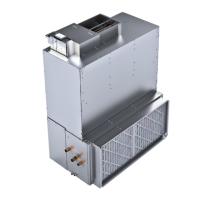
